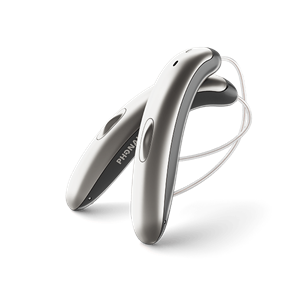Volume & decibels | Connect Hearing


Volume & decibels | Connect Hearing
15 min.
Publication Date: July 18, 2019
How loud are vacuum cleaners and traffic noise? How exactly do we measure volume and when do sounds become damaging to the human ear? Keep reading to learn the most important information you need to know when it comes to volume and your ears.
How do we measure volume?
We measure volume in sound pressure level. The unit of measurement is called decibels.
All sounds we perceive consist of air pressure oscillations that hit our ear drums. Only once they are transferred to our brain are they converted into information. Depending on the energy with which the oscillations – meaning the sound waves – hit our ear drums, we perceive them as loud or quiet. The more energy a sound has the louder it seems to be. To measure volume we use the unit of decibels – abbreviated to dB.
The lowest perceivable volume, meaning the most quiet sound humans can hear, is 0 decibels. Volumes of approximately 50 dB are pleasant for us, while the discomfort threshold starts at 100 dB and that of pain at about 120 dB. What’s important to know is that 100 dB are not twice as loud as 50 dB. Perception of volume is always subjective and depends on one’s own hearing but generally speaking, an increase of 10 dB roughly corresponds to the perceived volume doubling in intensity. Thus, 60 dB are perceived as twice as loud as 50 dB.
In noisy environments it is therefore even more important to protect one’s hearing in order to minimize the risk of impaired hearing. To make sure your hearing remains as good as it is it’s important to be aware of the types of hearing protection that are available for every area of life.
[ImageInText]
Measuring sound pressure levels is complex and requires complicated calculations. The decibel scale was introduced to make measurements easier for us to grasp. It looks at the unique capability of human hearing to strongly differentiate low sound levels while even large differences in sound pressure are not as precisely perceived in the high decibel range.
Using various filters, particularly low or high frequencies are reduced or regulated depending on our perception. The value on the scale thus corresponds more with our perceptions and is made measurable. dB values are most often given in dB (A) – the A standing for the use of the A filter, the so-called sound level evaluation curve A.
Decibel values are only linear at first glance – 120 dB would seem to be twice as loud as 60 dB but that’s not the case. The decibel scale is structured logarithmically. For measured values this means that a circular saw is not just twice as loud as talking but that its relative sound pressure is actually approx. 1,000 times as high.
Apart from this so-called dB(A) scale to measure noise, there is the dB(HL) scale used by audiologists and hearing acousticians to determine hearing loss.
Leaves rustling in the wind, a gnat or modern computers only measure a measly 10 dB, for instance. Whispering reaches 30 dB and regular talk roughly 60 dB. Screaming babies and motorcycles score 80 dB. Those who love to frequent night clubs are subjected to the same (110 dB) noise level that jackhammers and circular saws produce.
The noise created by jet planes – roughly 130 dB – is where our pain threshold starts. Slaps in the face and firecrackers going off right next to the ear are extremely loud and harmful. They reach dB values of up to 180. The extent to which we feel sound, meaning how disruptive it is to us, is also influenced by the distance between the source of the sound and our hearing system.
The impact of noise on our ears
We all sometimes put our hands on our ears – when a siren goes off or when watching fireworks. This protective mechanism makes a lot of sense for even little noise can cause lasting hearing damage and also adversely affect the entire body:
85 dB and up: Damaging range, especially in loud work places
120 dB and up: Hearing damage possible even in case of short-term exposure
Who is at risk?
In particular, people subjected to certain noise levels as part of their jobs, are at risk of suffering from hearing loss sooner or later. Permanent noise from power drills, chainsaws, air planes or music is present in many fields. Forestry workers, road construction workers, builders and factory workers are just as much at risk as professional musicians in orchestras or DJs that regularly turn tables in night clubs.
Tips on how to protect your hearing:
Protect your hearing from too much and excessive noise:
- Turn the volume to the minimum setting when listening to music using headphones
- Maintain as much distance as possible to the source of the noise
- Put your hands over your ears when perceiving a sound as disruptive
- Make use of ear plugs when subjected to high sound pressure for prolonged periods of time – for instance at concerts or in night clubs
- Regularly take hearing tests to detect possible hearing loss at an early stage and to allow treatment



